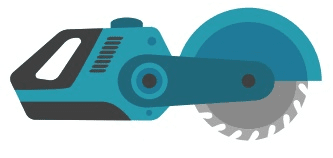A Comprehensive Guide To Mitter Saw. Ultimate Guide To Mitter Saw
Understanding the Miter Saw: A Comprehensive Guide
Miter saws are vital tools for any woodworking lover or professional carpenter. Likewise known as chop saws or drop saws, these powerful makers excel in delivering accurate and tidy cuts, making them important for various applications, from creating intricate moldings to building furnishings. In this post, we will explore the different types of miter saws, their functionality, functions, benefits, and even upkeep ideas. Additionally, we will answer some often asked questions to supply a well-rounded understanding of this important tool.
What is a Miter Saw?
At its core, a miter saw is a power tool utilized for making accurate crosscuts and miters in a workpiece. The blade is installed on a swing arm that rotates left or best to produce angled cuts. These cuts become vital when working with trim work, framing, and other woodworking tasks that require precision.
Types of Miter Saws
Miter saws can be found in numerous varieties, each created for particular applications. Below is a table summarizing the various types:
Type of Miter Saw
Description
Best For
Standard Miter Saw
Basic design with limited features. Cuts at numerous angles, normally up to 45 degrees.
Easy crosscuts and fundamental angles.
Compound Miter Saw
Can tilt to produce bevel cuts, in addition to miter cuts.
Crown molding and more complicated angles.
Sliding Compound Miter Saw
Features a sliding system that extends the cut capacity.
Larger materials, such as larger boards or doors.
Double Compound Miter Saw
Can tilt both left and right for included flexibility in bevel cuts.
More complex woodworking projects.
Functions of Miter Saws
When picking a miter saw, it's crucial to think about the functions that will best match your requirements. Here's a list of typical functions to look for:
Blade Size: Typically ranges from 8 to 12 inches. Larger blades can cut thicker products.
Laser Guide: Projects a cutting line on the workpiece for higher accuracy.
Dust Collection System: Helps maintain a clean work space by gathering debris created throughout cuts.
Rotating Arm: Allows the saw head to move smoothly and slice at different angles.
Bevel Capabilities: Many miter saws can produce both miter and bevel cuts.
Table Extensions: Useful for supporting bigger workpieces, boosting the tool's stability.
Safety Features: Blade guards and electric brakes to boost user safety.
Advantages of Using a Miter Saw
Miter saws use numerous advantages that make them a go-to tool for woodworkers. Here are some advantages:
Precision: Miter saws make sure clean, precise cuts which are important for professional quality.
Flexibility: Capable of carrying out a variety of cuts (crosscuts, miters, bevels), permitting innovative styles.
Efficiency: Miter saws speed up the cutting process, especially when preparing numerous similar pieces.
Security Features: They typically consist of guards and security switches that avoid unexpected cuts.
Minimized Waste: Accurate cuts will minimize product wastage, boosting cost-efficiency.
How to Maintain Your Miter Saw
Appropriate maintenance will lengthen the life of your miter saw and boost its efficiency. Here are upkeep tips:
Keep the Blade Sharp: Dull blades can lead to inaccurate cuts and increased stress on the motor.
Routine Cleaning: Remove sawdust and debris from the motor and the blade after every usage.
Look For Loose Parts: Periodically examine screws and bolts; tighten them as essential.
Lube: Keep moving parts oiled for smooth operation.
Check Electrical Components: Regularly examine cords and plugs for any indications of wear or damage.
FAQ About Miter Saws
Q1: What is the distinction between a miter saw and a circular saw?
A: Miter saws are designed for accurate crosscuts and angles, while circular saws are flexible tools that can make straight cuts in various materials.
Q2: How do I choose the best miter saw for my tasks?
A: Assess the kinds of cuts you will make, the materials you will deal with, and whether you need extra features like bevel capabilities or sliding motion.
Q3: Can I utilize a miter saw to cut metal or plastic?
A: Standard miter saws are not ideal for cutting metal. Utilize a blade particularly designed for metal or a various kind of saw, like a band saw, for that purpose.
Q4: What safety preventative measures should I take while utilizing a miter saw?
A: Always utilize eye security, keep hands clear of the blade, guarantee the saw is steady, and never ever start the saw while the blade protests the product.
Q5: How frequently should the blade be altered?
A: Change the blade when you observe a reduction in cutting performance or if you see damage or excessive wear.
A miter saw is an essential tool for anybody major about woodworking. Understanding its abilities, types, functions, and appropriate maintenance can significantly impact the quality of your jobs. Whether you're a beginner or an experienced woodworker, investing in a good miter saw will improve your craft and yield brilliant outcomes. With Mitter Saw and careful handling, a miter saw will become a vital ally in your woodworking journey.
